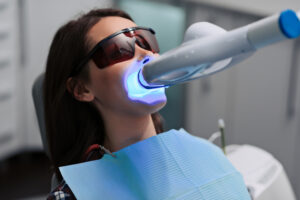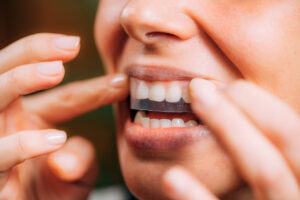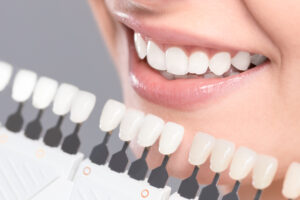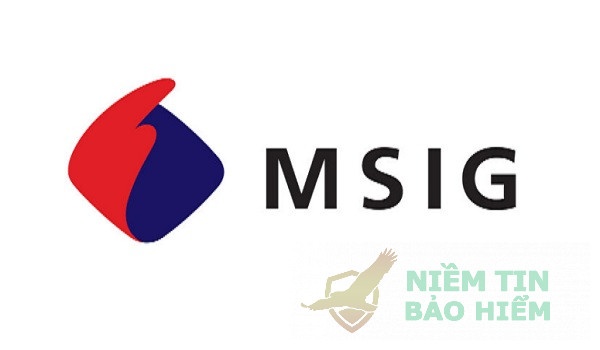Dental Knowledge, Kiến Thức Nha Khoa
Teeth Whitening: Price, Procedure And Everything You Need To Know
Teeth whitening is one of the most popular cosmetic dentistry procedures because it is a rapid, non-invasive, and cost-effective approach to brighten a smile. Men and women equally cherish whitening (or bleaching) treatments, which are available to suit any budget, time period, or temperament. Solutions abound, whether in the shape of one-hour whitening procedures provided by a dentist or cosmetic salon, or home-use bleaching kits purchased at your local drugstore.
Almost everyone who uses a teeth whitening treatment notices a moderate to significant increase in their smile’s brightness and whiteness. However, it is not a long-term fix for discolouration and requires maintenance or “touch-ups” to maintain the appearance.
We break down everything about teeth whitening in this post, including the process of tooth discolouration, what causes staining, the numerous treatment options available, and the dangers and costs connected with each.
What’s the Difference Between Bleaching and Whitening?
The term “bleaching” is only allowed to be used when teeth can be whitened beyond their natural color, according to the FDA. This only applies to bleach-containing compounds, such as hydrogen peroxide or carbamide peroxide.
The term “whitening” refers to restoring the color of a tooth’s surface by eliminating dirt and debris. As a result, any product that is used to clean the teeth (such as toothpaste) is theoretically a whitener. Of course, whitening sounds more appealing than bleaching, so it is increasingly commonly used, even when describing bleach-containing goods.
When time is of the essence, strong and fast-acting hydrogen peroxide is the bleach of choice for in-office teeth whitening. Hydrogen peroxide concentrations range from nine percent to forty percent when used to whiten teeth.
In contrast, carbamide peroxide, which breaks down into hydrogen peroxide, is the preferred bleach for at-home teeth whitening. The strength of carbamide peroxide is about one-third that of hydrogen peroxide. This indicates that a 15 percent carbamide peroxide solution is about similar to a 5% hydrogen peroxide solution.
Tooth Enamel Examination
Because of their porcelain-like enamel surface, most of us start out with shining white teeth. Tooth enamel is made up of small crystalline rods that protect teeth against the impacts of chewing, gnashing, trauma, and sugar-induced acid assaults. However, as enamel wears away, it becomes more translucent, allowing the yellow color of dentin — the tooth’s basic structure — to peek through.
Dentin remains intact during normal chewing, but millions of microcracks appear in the enamel. These fissures, as well as the spaces between the crystalline enamel rods, accumulate stains and debris over time. As a result, the teeth eventually develop a dull, lackluster appearance.
Teeth whitening eliminates stains and debris from the teeth, exposing the enamel fractures. Saliva immediately remineralizes some of the gaps, while organic material fills others.
Extrinsic vs. Intrinsic Discoloration of Teeth
When it comes to teeth discoloration, there are two types: extrinsic and intrinsic.
Extrinsic stains occur on teeth’s surface as a result of exposure to dark-colored beverages, meals, and tobacco, as well as normal wear and tear. Extrinsic stains on the surface are minimal and can be eradicated with regular brushing and dental cleaning. Extrinsic stains that are stubborn can be eliminated with further effort, such as teeth whitening. If not treated promptly, persistent external stains might reach the dentin and become embedded.
Internal stains are those that develop on the inside of teeth. Trauma, aging, exposure to minerals (such tetracycline) during tooth formation, and/or excessive fluoride consumption cause intrinsic stains. It was once assumed that intrinsic stains were too resistant to bleaching to be removed. Even deep-set intrinsic stains, according to cosmetic dental experts, can be eliminated with supervised take-home teeth whitening that is maintained for months or even a year. If everything else fails, dental veneers are an alternate aesthetic option for treating inherent stains.
What Causes Tooth Discoloration?
Tooth color and age have a direct relationship. Teeth darken as a result of wear and tear and stain collection over time. Whitening will most likely produce immediate and dramatic outcomes in teenagers. When teeth begin to develop a yellow tinge in their twenties, teeth whitening may require a little more work. By the 1940s, the yellow has faded to brown, and additional upkeep may be required. The teeth had absorbed a variety of persistent stains by the 1950s, which can be difficult (but not impossible) to remove.
- Starting color: We all have a natural tooth color that varies from yellow-brownish to greenish-grey and darkens with age. Green-grey is more susceptible to bleaching than yellow-brown.
- Translucency and thinness are other inherited features that become more noticeable as you get older. While all teeth have some translucency, opaque and thick teeth offer an advantage: they appear lighter in color, have more sparkle, and are more bleachable. Teeth that are thinner and more translucent, particularly the front teeth, contain less of the pigment needed for teeth whitening. Transparency, according to cosmetic dentists, is the single issue that no amount of tooth whitening can fix.
- Intake habits: Regular consumption of red wine, coffee, tea, cola, carrots, oranges, and other dark-colored beverages and meals produces significant discoloration over time. Acidic foods, such citrus fruits and vinegar, also contribute to enamel loss. As a result, the surface becomes more translucent, revealing more yellow-colored dentin.
- Smoking causes brownish deposits to form on the teeth, which slowly seep into the structure and create intrinsic discoloration.
- Tetracycline use during tooth development causes dark grey or brown ribbon stains that are extremely difficult to remove. Fluorosis (discoloration defined by the formation of faint white markings on the teeth) and related areas of white mottling are caused by excessive fluoride ingestion.
- Grinding: Teeth grinding (gnashing, bruxing, etc.) can cause micro-cracking in the teeth and darken the biting edges. It is most commonly triggered by stress.
- Trauma: Falls and other accidents can cause huge gaps in the teeth, which trap a lot of bacteria and debris.
What Whitening Options Do You Have?
Today, there are three major teeth whitening alternatives. All three rely on different peroxide concentrations and application times.
Chairside Whitening
The main advantage of in-office teeth whitening is the significant color change in a short amount of time. This procedure involves the dentist or trained technician applying a somewhat high-concentration peroxide gel to the teeth after the gums have been protected with a paint-on rubber dam. The peroxide is usually left on the teeth for 15 to 20 minutes at a time, totaling one hour (at most). Those with especially resistant stains may be recommended to return for one or more further bleaching treatments or to use a home-use method.
Cost: approximately 3.000.000 VND each visit (on average) across the country.

Take-Home Kits Dispensed by Professionals
Many dentists believe that properly administered take-home teeth whitening kits can provide the best long-term outcomes. Take-home kits include an easy-to-use peroxide gel with a lower concentration that stays on the teeth for an hour or more (sometimes overnight). The lesser the peroxide concentration, the longer it can stay on the teeth safely. Custom-made whitening trays that look like mouth guards are used to apply the gel to the teeth.
Cost: 900.000 VND to 1.500.000 VND.

Over-the-counter Teeth Whitening Products
Over-the-counter bleaching is the cheapest and most convenient of the teeth whitening methods. It entails using a store-bought whitening kit with a bleaching gel that has a lower concentration than the professionally applied take-home whiteners. One-size-fits-all trays, strips, or paint-on applicators are used to apply the gel to the teeth. Unlike bespoke trays, which can whiten the complete smile, this may only whiten a few of the front teeth. The most popular option in Vietnam in recent days are the Crest 3D Whitestrips.
Cost: 60.000 VND to 700.000 VND.

How White Is Too White?
The outcomes are subjective and vary greatly from person to person. Many people are ecstatic with their results right away, while others may be dissatisfied. Before you start any teeth whitening treatment, talk to your dentist about what kind of results you may expect and how long it will take to get there.
Shade Charts
Before-and-after tooth color is often measured with shade guidelines in the dental office. These are portable screens that show a variety of tooth hues. (Dentists use them to select crown and other restoration colors.)
The standard-setter among them has long been the Vitapan Classic Shade Guide. This shade guide standard incorporates 16 shades, systematically arranged from light to dark into four color groups, and provides a universal tooth-color terminology.

While teeth whitening can occasionally lighten tooth color by nine or more shades, most of those who bleach their teeth are likely to see a change of two to seven shades.
Risks
Teeth whitening treatments are considered to be safe when procedures are followed as directed. However, there are certain risks associated with bleaching that you should be aware of:
- Bleaching might make you more sensitive to temperature, pressure, and touch for a short time. This is most likely to happen during in-office teeth whitening, when stronger bleach is utilized. Some people have “zingers,” which are shooting pains along the middle of their front teeth. Those with gum recession, major fissures in their teeth, or leaks caused by poor restorations are at the most risk of whitening sensitivity. Redheads, even those with no other risk factors, have been observed to be more susceptible to dental sensitivity and zingers. Whitening sensitivity usually lasts a day or two, but it might last up to a month in extreme situations. For sensitive teeth, some dentists recommend potassium nitrate toothpaste.
- Gum inflammation: More than half of those who use peroxide whiteners suffer from gum inflammation as a result of the bleach concentration or contact with the trays. The irritation usually lasts a few days and goes away if the bleaching is discontinued or the peroxide concentration is reduced.
- Restorations such as bonding, dental crowns, and veneers are unaffected by bleach, so they retain their natural color while the surrounding teeth are whitened. The outcome is a condition known as “technicolor teeth.”
Keeping Your Progress
- Dentists are likely to recommend at-home follow-up or maintenance whitening to extend the life of newly whitened teeth. This can be done right away or as infrequently as once a year.
- After whitening, stay away from dark-colored meals and beverages for at least a week.
- Drink dark-colored liquids using a straw whenever possible.
- Brushing and flossing after meals and at bedtime to maintain good dental hygiene.
How Much Does Teeth Whitening Cost?
Pricing might vary greatly depending on the product and process required.
The most expensive alternative is professional in-office teeth whitening (chairside whitening), which costs on average 3.000.000 VND per appointment (price can range from 2.000.000 VND to 3.500.000 VND). It does, however, have the advantage of being performed by an experienced dental practitioner, ensuring that you obtain the outcomes you want.
Over-the-counter strips and trays, which may be purchased at a local pharmacy or grocery shop, are at the opposite end of the expense spectrum. These products can cost anywhere from 60.000 VND to 700.000 VND, making them appealing to individuals searching for a little smile boost without the hefty cost of professional teeth whitening. However, while using these less expensive, low-concentration peroxide whiteners, take in mind that outcomes can vary dramatically.
You might be a suitable candidate for professionally dispensed take-home kits if you’re seeking for a medium ground between professional teeth whitening and over-the-counter treatments. These kits, which are prescribed by a dentist and range in price from $100 to $400, can potentially offer results identical to those obtained in-office by a dentist.
Keep in mind that whitening results aren’t permanent, so you’ll need to keep undergoing treatments when the effects wear off if you want to keep your white smile.
So, are you thinking of getting teeth whitening to brighten up a tarnished smile? The most common cosmetic dental procedure today is professional chairside whitening. In contrast to home-use products that use low-dose bleaching chemicals, chairside whitening takes place under closely regulated conditions, allowing for the safe, controlled, and pain-free application of a relatively high concentration of bleaching gel – with rapid results.
Advantages
- Provides the quickest results.
- The most secure method of bleaching.
- Gum and tooth sensitivity (which were previously downsides to chairside bleaching) are more controllable due to thicker peroxide gels (that don’t sink into the teeth as much as prior gels) and the use of desensitizers such potassium nitrate and fluoride nowadays.
Disadvantages
- More pricey than options available at home – about 3.000.000 VND on average, against 180.000 VND to 250.000 VND for take-home trays (not including bleaching paste’s price which varies from 100.000 to 700.000 VND) and approximately 500.000 VND to 600.000 VND for over-the-counter bleaching trays or strips.
- Depending on factors including age, heredity, and the type of staining present, the results can be unpredictable.
- Chairside bleaching is not a long-term solution. Your teeth will begin to stain again shortly after completing the therapy. As a result, many dentists advise following up at home with a lower-percentage bleach that can be left on for longer periods of time.
Stains That Should Be Professionally Removed
Chairside whitening removes organic stains or discolorations caused by the following factors:
- Aging: Teeth usually get tarnished throughout time, taking on a yellow, brown, green, or grey hue (owing to heredity and/or dietary habits). Yellowed teeth are the easiest to whiten.
- Consuming some certain foods (notably coffee, red wine, sodas and dark-colored vegetables and fruits).
- Tobacco consumption.
Stains That Are Resistant To Chairside Whitening
- Chairside treatment does not work well on teeth with some stains, especially inorganic stains. In fact, when the surrounding teeth have been whitened, these teeth may appear considerably darker.
- Dentin darkening resulting from trauma.
- Consumption of tetracycline antibiotics during years of teeth development. These medications bond chemically to the crystalline structure of both the enamel and the underlying dentin of the tooth.
- Too much fluoride can induce fluorosis, which results in tooth discolouration.
How would you know if this technique is for you?
This technique is not recommended for anyone who have any of the following conditions:
- Oral hypersensitivity: Your dentist is likely to propose take-home bleaching trays with a low dose of carbamide peroxide – which is milder than hydrogen peroxide – to avoid triggering a hypersensitive reaction.
- Obstinate staining: Some stains are resistant to chairside bleaches with high concentrations. Dentists may propose a supervised take-home whitening routine or alternatives to peroxide bleaching such tooth bonding, crowns, or veneers in such circumstances.
- Aged teeth that have turned translucent. This is especially true of the front teeth, which are already thin.
Teeth Preparation
- A preventive cleaning should most likely be performed to remove plaque and debris that has accumulated on the surface and between the teeth.
- A dental checkup will be conducted (typically in conjunction with the preventive cleaning) to look for concerns such serious tooth decay, cracks, and gum disease. If these conditions exist, bleaches can produce variable degrees of irritation. Your dentist will most likely postpone the procedure until these issues are resolved.
- Your teeth may be photographed and then you will have their color measured using a shade guide. This serves as a baseline against which you can measure your development.
The Chairside Whitening Procedure
While the specifics may differ, a pretty standard procedure is followed. The steps are usually not painful or unpleasant; in fact, many patients fall asleep or watch a DVD or TV throughout the operation.
- A cheek retractor is placed in your mouth, exposing all of the “esthetic zone” teeth (teeth that are visible when you smile).
- To protect the gum tissue from any irritation induced by the bleaching gel, a liquid rubber dam or hardening resin is painted on it.
- A hydrogen peroxide-based bleaching gel is applied to the esthetic zone teeth and left on for 15 to 30 minutes.
- The bleaching gel is suctioned or washed away, and new gel is applied for one or more 15-minute sessions.
- Some whitening procedures use a bright light that is focused on the teeth and is supposed to trigger or speed up the bleaching process. Whether this light enhances the bleaching outcome is a matter of debate.
- The teeth are evaluated in between gel treatments to see how thoroughly they have whitened and whether additional bleach is needed.
- The cheek retractors are withdrawn after the final gel application, the patient rinses, and the immediate post-treatment shade shift is measured. Whitening might be as little as two to three shades or as much as eight (out of a total of 16). Dehydration during the bleaching process contributes to the whitening effect, making the teeth appear whiter than they are. After a few days, that color will appear.
If a desirable amount of whitening isn’t attained, your dentist may propose a subsequent chairside bleaching session and/or a home bleaching tray routine.
More
Tooth decay and 11 risk factors
Toothache and 6 common symptoms
Tư vấn chuyên môn bài viết:
BÁC SĨ DƯƠNG THỊ THÙY NGA
BEDENTAL - TOP STANDARD DENTISTRY SYSTEM
In HANOI
Address 1: 7B Thi Sach St, Ngo Thi Nham, Hai Ba Trung Dist, Ha Noi. - 0934.61.9090
Address 2: 343 Tay Son St, Nga Tu So Ward, Dong Da Dist, Ha Noi. (Nga Tu So Cross) - 0934.61.9090
Address 3: CC2 Tower Nguyen Huu Tho St, Dinh Cong Ward, Hoang Mai Dist, Ha Noi. (Inside True Hope ) - 0934.61.9090
In HO CHI MINH
Address 1: 53 -55 -57 Pho Duc Chinh St, Nguyen Thai Binh, Dist. 1, Ho Chi Minh. - 0766.00.8080
Address2: 25, City Land urban area, Go Vap Dist, Ho Chi Minh - 0766.00.8080
Working: 9am - 6pm everyday
Website: https://bedental.vn/en/
Are you considering getting that teeth whitening treatment? Book an appointment with us now via this link!










Pingback: Best Dental Clinics Near Me in Hanoi | Nha Khoa Bedental
Pingback: Over-the-counter teeth whitening and 7 common questions – Be Dental
Pingback: Teeth fluorosis: 4+ things you must know – Be Dental
Pingback: In-Office Teeth Whitening and 3 Outstanding Advantages of In-Office Teeth Whitening | Nha Khoa Bedental
Pingback: At-Home Teeth Whitening Kits and 5 Steps to Keep Your Teeth White | Nha Khoa Bedental